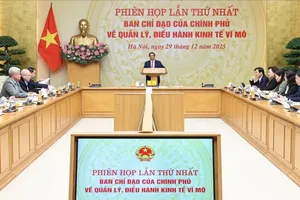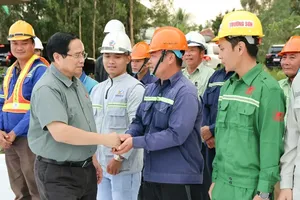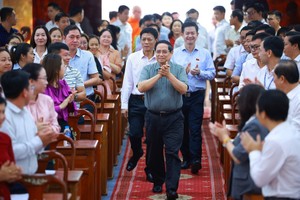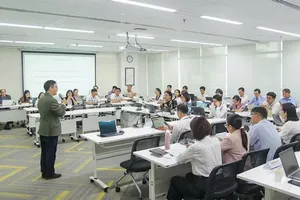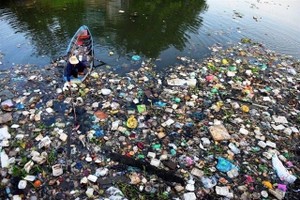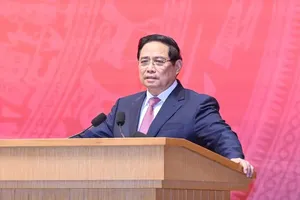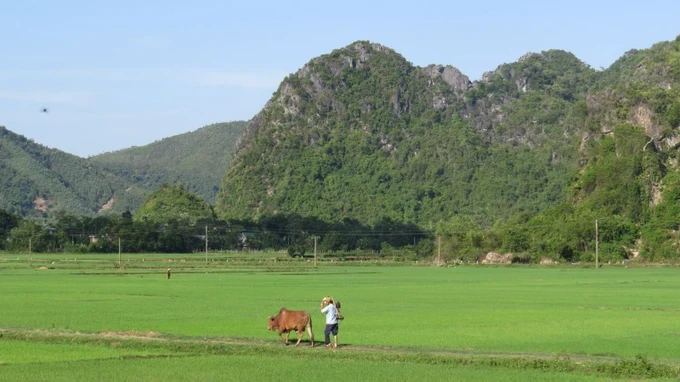
Seeing the current widespread encroachment and destruction of hills and mountains, Deputy Director Ho Dac Chuong of the Binh Dinh Province Department of Agriculture and Rural Development pondered that increasingly extreme and abnormal natural disasters are often blamed for recent landslides, even though the root cause is largely due to human impact on nature.
He further explained that the encroachment on hills and mountains began when people adopted the mindset of “making money from forests”, stemming from the monoculture movement of acacia, eucalyptus, and melaleuca trees. Subsequently, the wave of construction projects and mineral mines further contributed to the forced exploitation of mountains. The solution now is to restore and regenerate lush green areas to hold the soil and prevent landslides.
The Binh Dinh Province People's Committee has planned to spend hundreds of billions of VND to relocate people at risk of landslides from highly risky mountains. Afterwards, An Lao and Phu Cat districts proposed that the province reclaim over 110ha of production forests on Cam and Tra Cong mountains for restoration and rehabilitation of protective forests.
Another solution can be found in Quang Binh Province. To the upper reach of the Gianh River, Hoang Minh De, former Secretary of the District Party Committee and Chairman of the People's Committee of Tuyen Hoa District shared that the collective leadership of this district 20 years ago successfully persuaded the provincial People's Council not to exchange 102 hectares of forest land for a quarry in Thach Hoa Commune.
They faced immense pressure in the efforts to eliminate the 102-hectare quarry planning to preserve the limestone mountains and adjacent habitats in the commune. Businesses complained about obstacles, and superior authorities expressed concerns.
However, with unified district leadership and scientific documentation, by 2018, the Provincial People's Council agreed to abandon the quarry planning. Consequently, the 102-hectare limestone area was incorporated into the larger limestone region encompassing Thach Hoa, Thuan Hoa, and Dong Hoa communes, establishing a conservation area for the endangered white-cheeked langur population as well as numerous majestic limestone mountain ranges, often referred to as the “Ha Long Bay on the land”.
One extremely concerning issue is the Mineral Law's stipulation that quarry investors and state project contractors must independently negotiate with residents before receiving extraction permits. The disparity between state compensation rates and market prices leads to diverse opinions among residents during negotiations. They often resort to circumventing regulations, engaging in clandestine negotiations, or purchasing land from a few households to proceed with unauthorized excavation to meet project deadlines, leaving the mountains and landscape to “fend for themselves”.
To cope with such illegal activities, in Phu Yen Province, local authorities have established inspection teams and covert surveillance to combat illegal mineral extraction at Mount Ba. A significant case in Nghe An Province involved the dismantling of a large-scale illegal mining operation, leading to the arrest of multiple individuals and the disciplinary action against local officials. This case underscores the importance of strict enforcement and accountability in addressing illegal mining activities.
Recalling the government’s emphasized message regarding development that “won't sacrifice the environment for economic growth” and pointing out that some localities conduct superficial oversight, and mining enterprises either provide token compliance or completely neglect restoration, Prof Le Trung Chon of Ho Chi Minh City University of Natural Resources and Environment proposed that the draft Geology and Minerals Law should incorporate green biomass indices, carbon metrics, and appropriate vegetation selection for restoring each exploited mining surface.
To ensure sufficient conventional construction materials for the North-South Expressway East project, the Government issued Resolution 60/NQ-CP on June 16, 2021, implementing special mechanisms for licensing mineral extraction for construction materials, clearly defining responsibilities for each locality and department. The Government's directive emphasizes ensuring no adverse effects on landscape, environment, landslide prevention, geological hazards, and biodiversity; maintaining strict extraction control and severe punishment for violations.
In 2022 and 2023, the Government continued issuing new resolutions, directives, and guidance to update and supplement special mechanisms and resolve obstacles. Nevertheless, violations persist. Alongside resolved cases, some remain pending or have newly emerged.
Statistics from the 7th session of the 15th National Assembly reveal that over the past five years, the Ministry of Natural Resources and Environment has conducted 12 inspections and 40 examinations of mineral law compliance, identifying and penalizing 258 organizations and individuals for violations.
The Ministry emphasizes that primary responsibility lies with localities, local leaders, and the entire political system in monitoring and promptly addressing violations. The draft Geology and Minerals Law will also address stronger decentralization to localities. Moving forward, the Ministry will continue collaborating with the Ministry of Public Security to enhance inspection and examination efforts, working alongside localities to rigorously implement these duties.

